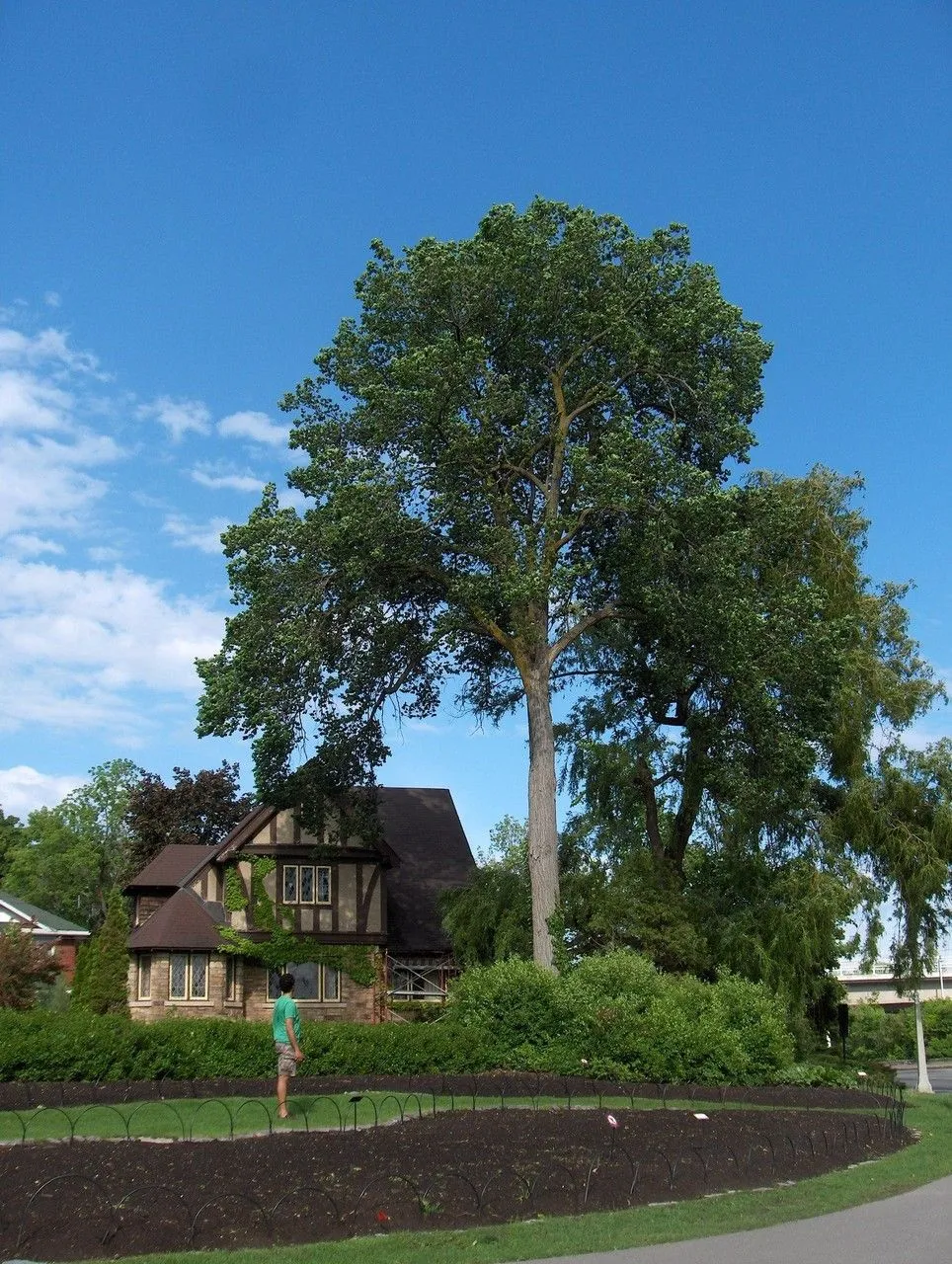
Author: Sarg.
Bibliography: Silva N. Amer. 14: 102 (1902)
Year: 1902
Status: accepted
Rank: species
Genus: Ulmus
Vegetable: False
Observations: SE. Canada to C. & E. U.S.A.
The Cork elm, known scientifically as Ulmus thomasii, is a unique and resilient member of the Ulmaceae family. This Elm species is native to regions spanning from Southeastern Canada to Central and Eastern United States. Its presence in these geographical zones marks its ability to adapt and thrive in various climates.
First described by Sargent in 1902 within the 14th volume of “Silva North America,” the Cork elm has since garnered appreciation for its distinctive characteristics and ecological importance. Sargent’s meticulous documentation has provided a solid foundation for subsequent botanical studies and conservation efforts concerning this species.
The Cork elm stands out notably for its distinctive, thick, corky bark which serves as a protective layer. This texture not only gives the tree its common name but also plays a crucial role in its survival, aiding in moisture retention and defense against pests and diseases. These attributes make Ulmus thomasii particularly robust and enduring in its natural habitats.
In addition to its hardiness, the Cork elm is valued for its aesthetic appeal and the shade it provides. Its leaves are typically oval with serrated edges, turning vibrant shades of yellow in the fall. This seasonal transformation adds to the elm’s attractiveness in landscape design and urban planting.
Ecologically, the Cork elm contributes significantly to its environment. It serves as a habitat and food source for various wildlife, including birds and insects. Its deep root system helps stabilize soil and reduce erosion, further emphasizing its role in maintaining the integrity of its native ecosystems.
In conclusion, Ulmus thomasii, or the Cork elm, is not only a testament to the durability and versatility of trees within the Ulmaceae family but also a crucial component of the natural landscapes in Southeastern Canada and Central to Eastern United States. Its unique bark, adaptive capabilities, and ecological benefits underscore the importance of its preservation and study in the realm of botany.
Eng: cork elm, rock elm
Deu: felsenulme
Swe: klippalm
Fra: orme de thomas, orme liège
En: Cork elm, Rock elm
Ar: دردار توماسي
Fr: Orme de Thomas, Orme liège
De: Felsenulme, Felsen-Ulme
Sv: Klippalm
Tr: Mantar karaağacı
Uk: В’яз скельний
Taken Mar 6, 2016 by EOL − owenclarkin (cc-by-nc)
Taken Feb 23, 2016 by EOL − owenclarkin (cc-by-nc)
Taken Nov 10, 2021 by kathy gilbert (cc-by-sa)
Taken Aug 7, 2020 by Jessica Sivret (cc-by-sa)
Taken Dec 27, 2015 by EOL − owenclarkin (cc-by-nc)
Taken Jun 1, 2020 by Lara Williamson (cc-by-sa)
Taken Mar 6, 2016 by EOL − owenclarkin (cc-by-nc)
Taken Mar 6, 2016 by EOL − owenclarkin (cc-by-nc)
Taken Dec 5, 2016 by Xoma Lone (cc-by-sa)
Taken Feb 15, 2016 by EOL − owenclarkin (cc-by-nc)
Taken Mar 14, 2016 by EOL − owenclarkin (cc-by-nc)
Taken Mar 14, 2016 by EOL − owenclarkin (cc-by-nc)
Taken Feb 23, 2016 by EOL − owenclarkin (cc-by-nc)
Taken Feb 28, 2016 by EOL − owenclarkin (cc-by-nc)
Taken Feb 15, 2016 by EOL − owenclarkin (cc-by-nc)
Growth form>: Single Stem
Growth habit>: Tree
Growth rate>: Moderate
Ph maximum: 7.2
Ph minimum: 4.5
Family: Myrtaceae Author: (F.Muell.) K.D.Hill & L.A.S.Johnson Bibliography: Telopea 6: 402 (1995) Year: 1995 Status:…
Family: Rubiaceae Author: Pierre ex A.Froehner Bibliography: Notizbl. Bot. Gart. Berlin-Dahlem 1: 237 (1897) Year:…
Family: Sapindaceae Author: Koidz. Bibliography: J. Coll. Sci. Imp. Univ. Tokyo 32(1): 38 (1911) Year:…
Family: Asteraceae Author: A.Gray Bibliography: Pacif. Railr. Rep.: 107 (1857) Year: 1857 Status: accepted Rank:…
Family: Fabaceae Author: Medik. Bibliography: Vorles. Churpfälz. Phys.-Ökon. Ges. 2: 398 (1787) Year: 1787 Status:…
Family: Aspleniaceae Author: (Cav.) Alston Bibliography: Bull. Misc. Inform. Kew 1932: 309 (1932) Year: 1932…